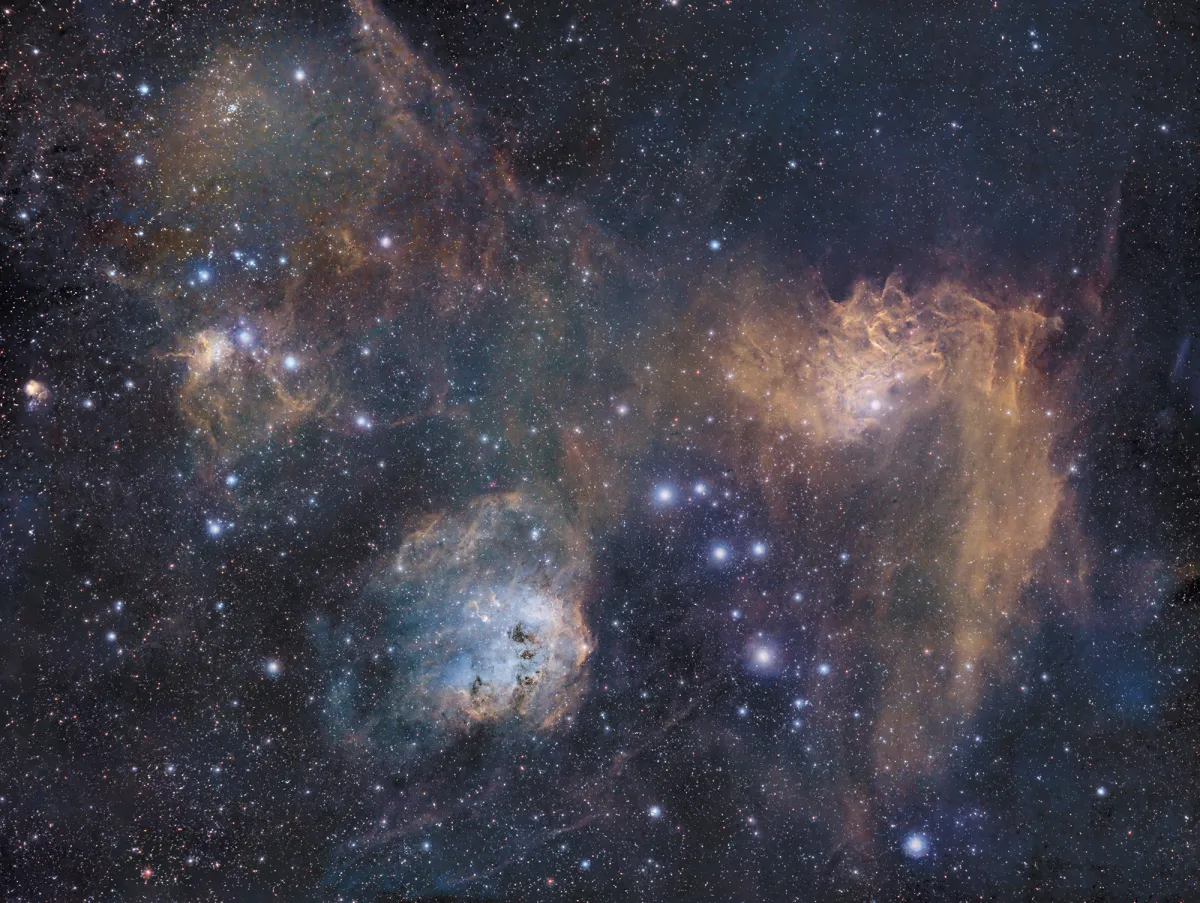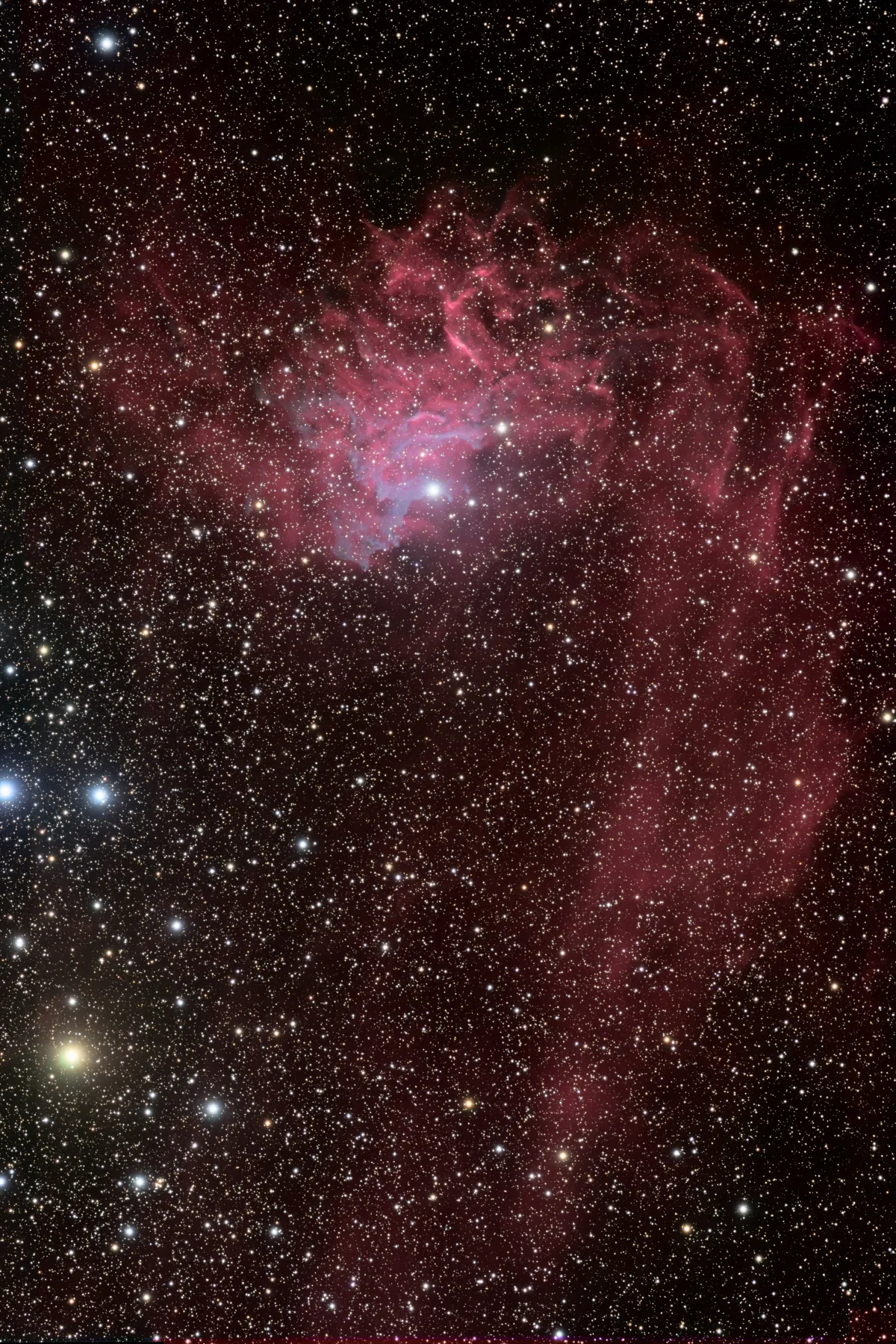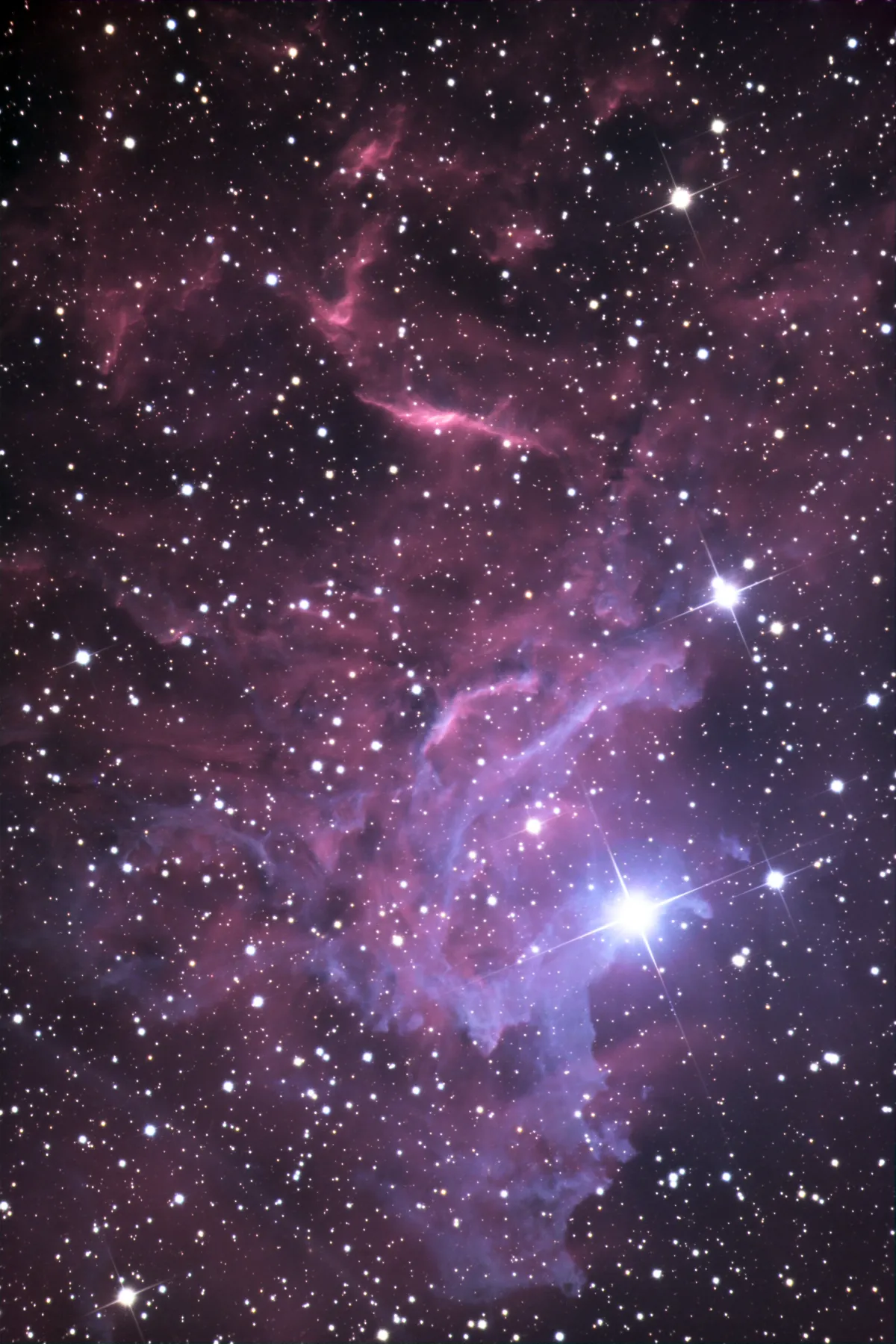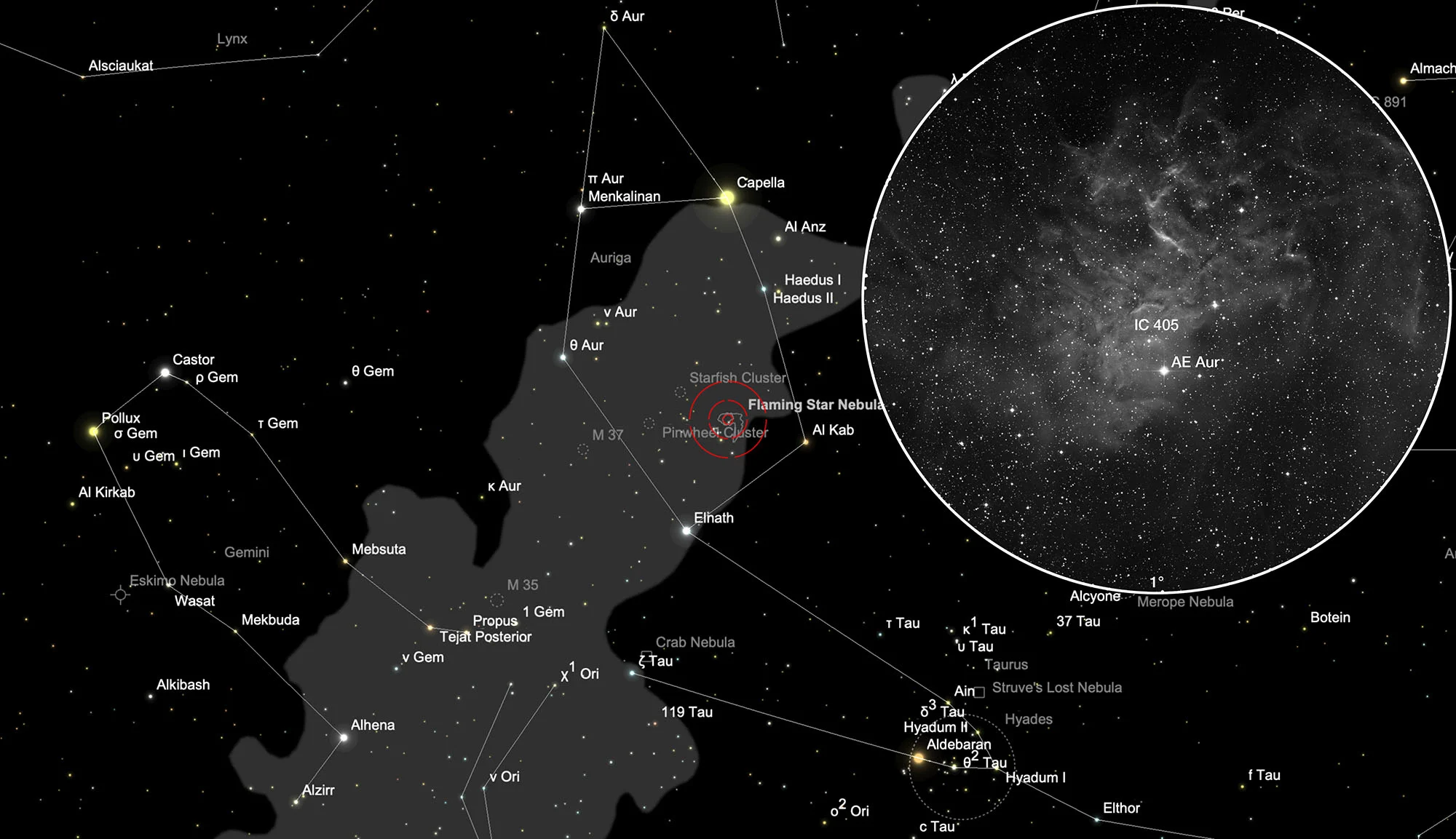Flaming Star Nebula (IC 405)




History
IC 405 was discovered photographically on 21 March 1892 by the German-American astronomer Johann Martin Schäberle and in the same year was captured by the German astronomer Max Wolf and in October by the Hungarian astronomer Eugen von Gothard.
Physical Properties
IC 405 is an emission and reflection nebula. The strong UV radiation of the irregular Orion variable, about six magnitudes bright star star AE Aurigae (HR 1712, HIP 24575) is responsible for the glow. This star, however, had not formed in the nebula. AE Aurigae is a runaway star, which is noticeable due to its high space movement of 113 km/s. This could be traced back to the Orion Nebula, from which it is about 60 degrees separated today. About 2.6 million years ago, a near collision of two binary star systems caused AE Aurigae to be ejected from the trapezoid cluster in the Orion Nebula. Other stars that are believed to have originated from this event are μ Columbae and 53 Arietis. The binary star system ι Orionis could have been the other half of this near-collision. According to another theory, a supernova explosion could have been responsible for this. [196, 298] The distance from the star AE Aurigae is given as 405 to 548 parsecs (approx. 1300 to 1800 light years). [145]

Other objects that seem to belong to the same molecular cloud are: NGC 1931, IC 410 and IC 417. The distance from IC 417 to Earth is about 2.19 kpc, around 7100 light years. The distance from the star AE Aurigae, which is responsible for the flame star nebula IC 405, is given as 405 to 548 parsecs (approx. 1300 to 1800 light years) and is therefore much closer. [145] Either the distance information is incorrect, the nebula area is much larger, or it is a matter of different nebulae that lie in the same viewing direction.
| Designation | IC 405 |
| Type | EN |
| Right Ascension (J2000.0) | 05h 16m 29.4s |
| Declination (J2000.0) | +34° 21' 22" |
| Diameter | 30 × 20 arcmin |
| Photographic (blue) magnitude | 10.0 mag |
| Metric Distance | 0.460 kpc |
| Dreyer Description | * 6.7 with pB, vL neb |
| Identification, Remarks | LBN 795; CED 42; in Sh2-229 (Flaming Star nebula) |
Finder Chart
IC 405 is located in the southern part of the Auriga pentagon. On 13 December it is in opposition to the Sun and crosses the meridian at local midnight. The best observation time is August to May.
Visual Observation
300 mm Aperture: Although IC 405 looks on pictures as bright as the neighbouring nebula IC 410, there was no nebula visible on that position with and without O-III filter. — 300 mm f/4 Popp Newton, Titlis 3020 m above sea level, SQM 21.25, 29. Oktober 2022, 23:45, Bernd Nies
